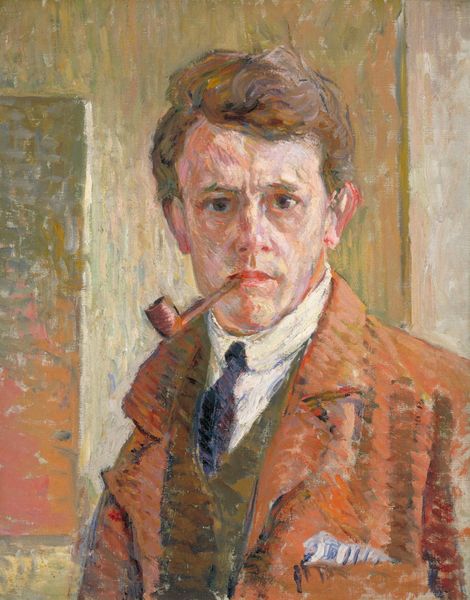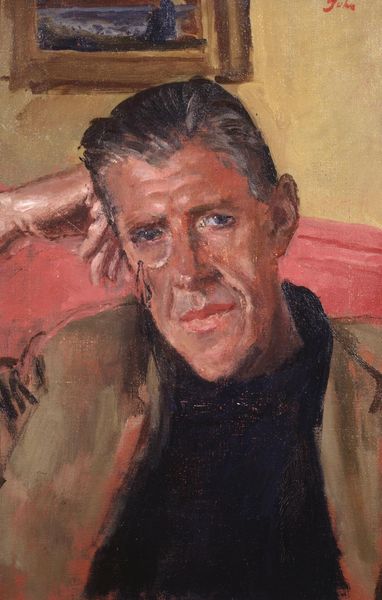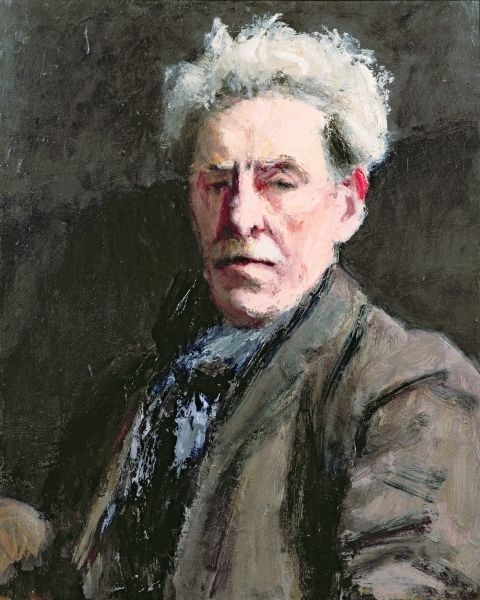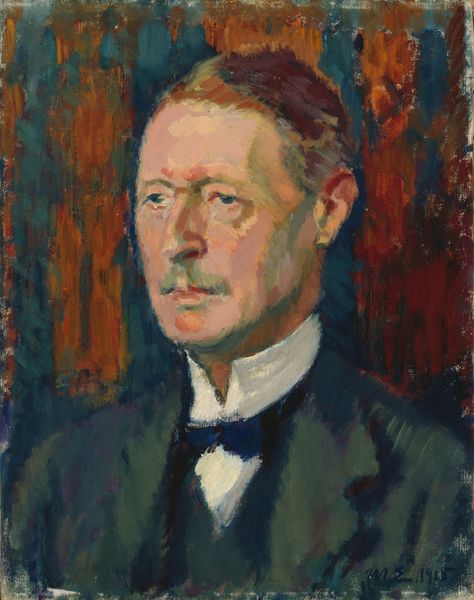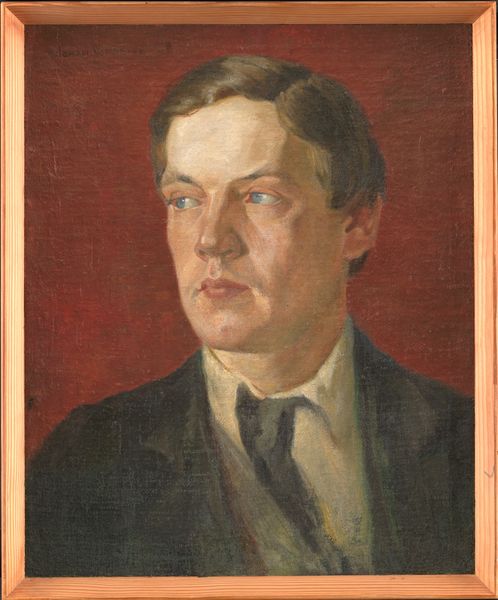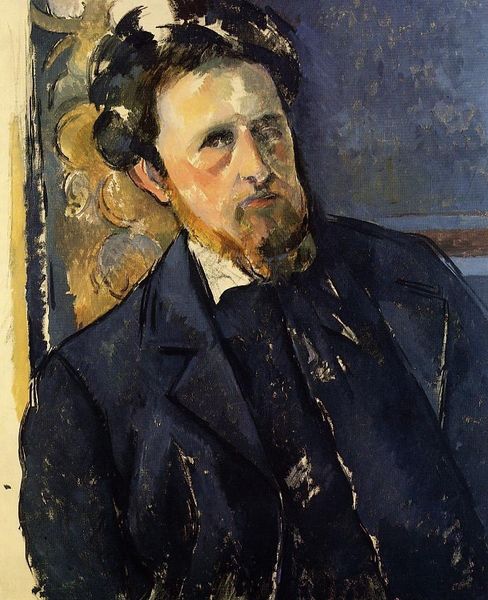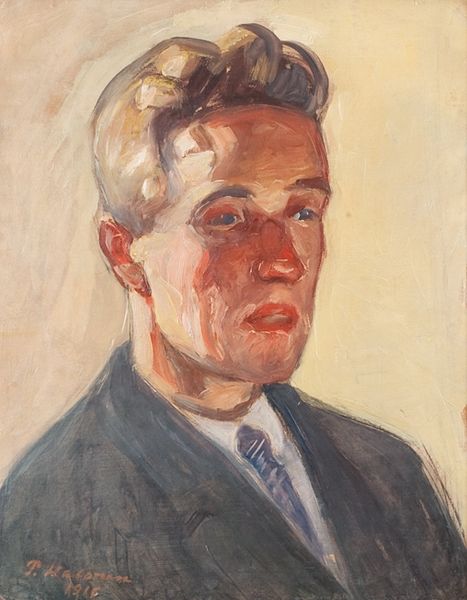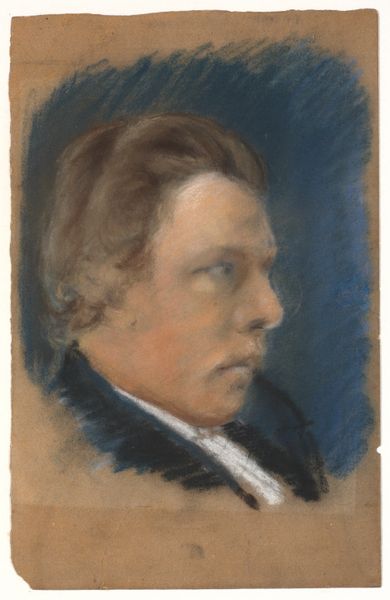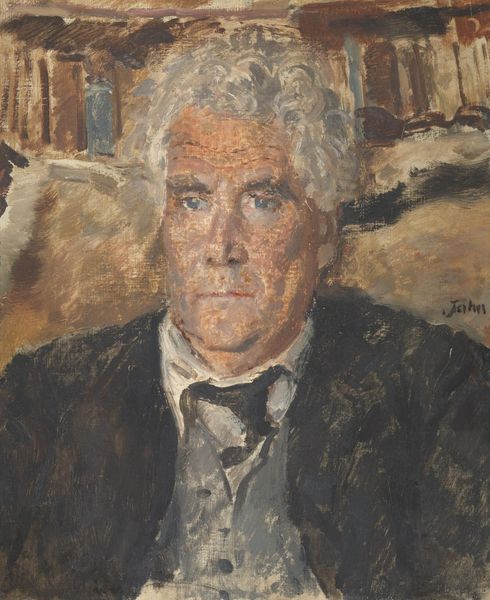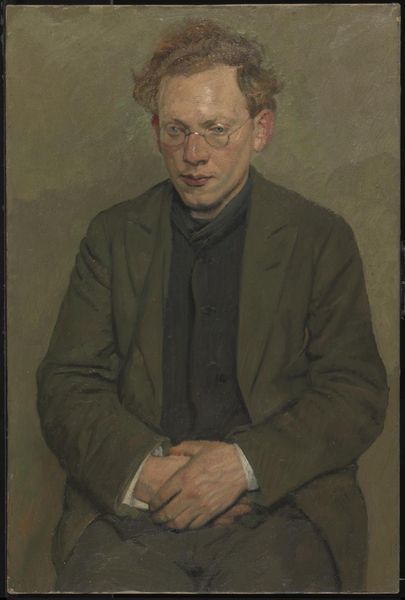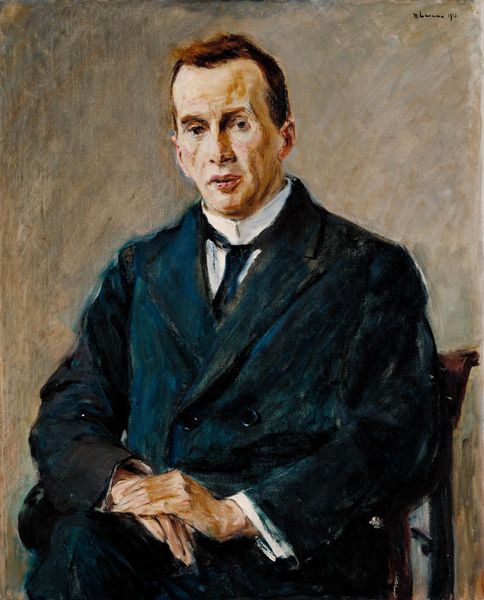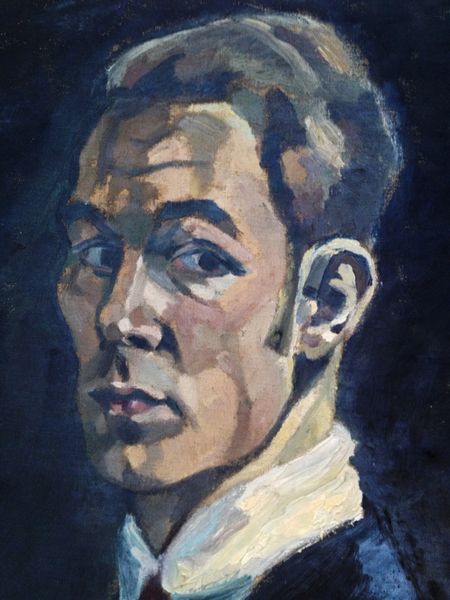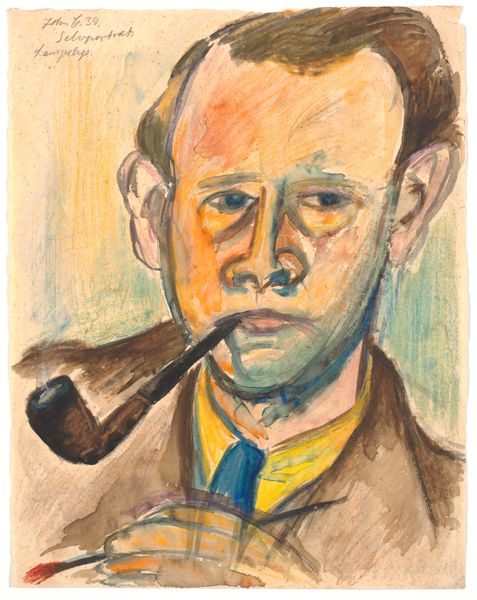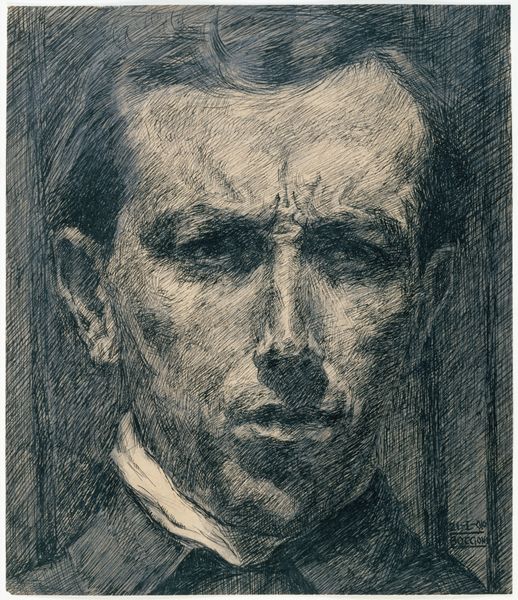
painting, oil-paint
#
portrait
#
self-portrait
#
portrait
#
painting
#
oil-paint
#
figuration
#
expressionism
Dimensions: 33.6 x 22.2 cm
Copyright: Public Domain
Curator: This is Jakob Nussbaum’s "Self-portrait," completed in 1927, now residing here at the Städel Museum. It's an oil painting capturing the artist in a moment of what appears to be deep introspection. Editor: Introspection indeed. My immediate sense is a certain quiet intensity. There’s a subdued palette, but those eyes are so piercing, direct, challenging almost. It has a gravity to it. Curator: Expressionism certainly leans into conveying intense feeling. The historical context is key here; this was painted during the Weimar Republic, a period of social and political turbulence. Artists like Nussbaum often used self-portraiture to explore their place in a rapidly changing world, as Jewish Germans witnessing the rising tide of antisemitism. Editor: Yes, that history really contextualizes those piercing eyes. It feels like a confrontation of identity. Look how he positions himself: frontal, almost clinical, but with this vulnerability shimmering underneath the surface. Is it about self-assessment or even defiance in the face of looming persecution? Curator: Art history situates Nussbaum as a prominent member of the Jewish cultural scene in Frankfurt. The direct gaze you’ve noticed isn't merely about capturing likeness, it’s a statement of presence, even resistance against the forces seeking to erase that presence from public life. Editor: Right. His formal attire, that almost bureaucratic black suit and white shirt, feels like he's consciously projecting a specific, perhaps respectable image—playing a part required by society. It speaks volumes about forced assimilation. Curator: I'd agree, there's an element of performance in it, consciously projecting bourgeois stability even as the ground shifts beneath him and those of us who shared a similar cultural heritage. That the Städel has prominently placed this artwork in its Expressionism rooms allows viewers a deeper glimpse into those times, connecting art to life. Editor: Absolutely. Nussbaum, here, transforms personal introspection into a powerfully political statement of his time and beyond. Looking at it today invites necessary dialogue about those past inequities that keep echoing still. Curator: Nussbaum's "Self-portrait" serves as a poignant reminder that we mustn't separate an artwork from the socio-political context from which it arose; and to critically observe, like he did, the public role of art and artists. Editor: I will take with me the way in which his artwork and self representation serves as resistance. This small piece asks us to see art as a form of powerful defiance and reflection.
Comments
stadelmuseum about 2 years ago
⋮
In the 1920s, Nussbaum was one of the most important artist personalities in Frankfurt and made a considerable contribution to the cultural life of the city. At the Städel School, he headed a master studio but, after the seizure of power by the Nazis, was forced to step down because of his Jewish ancestry and fled to Palestine. Here, he presents his face in semi-profile, gazing out at the viewer with scepticism. The Impressionist play of shadow adds drama to the gaze. The collar of his painting smock refers to his profession as an artist, whereby the focus is laid on his emotional expression.
Join the conversation
Join millions of artists and users on Artera today and experience the ultimate creative platform.
